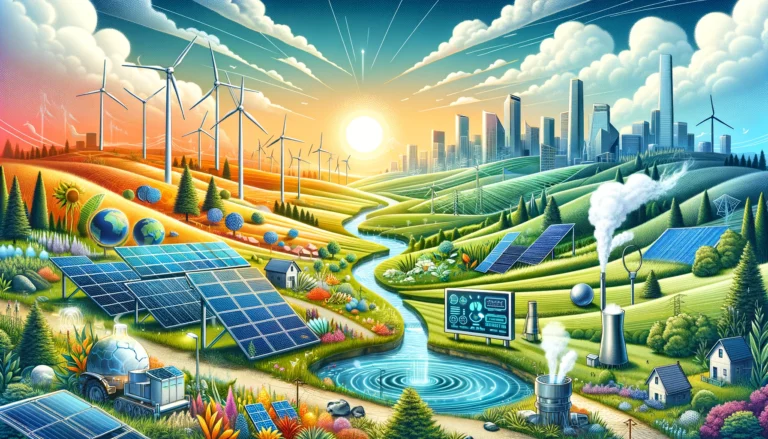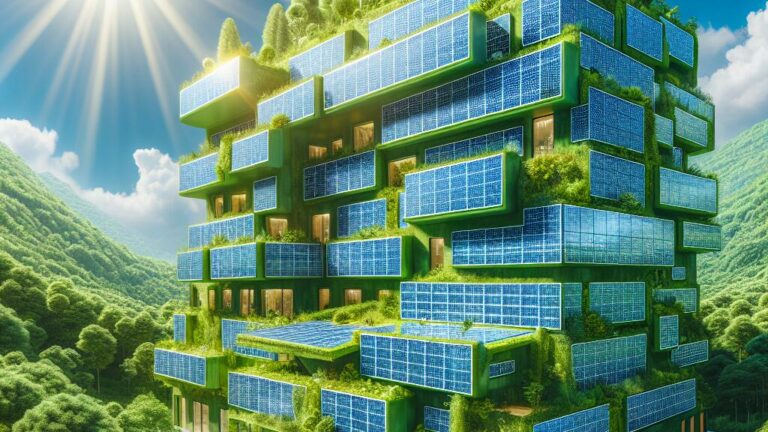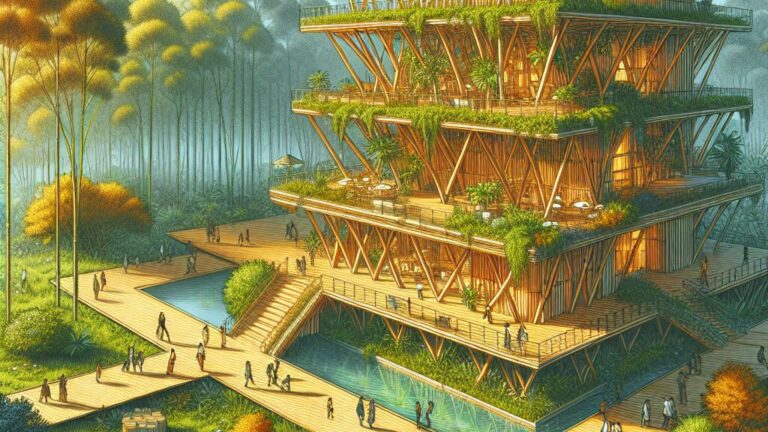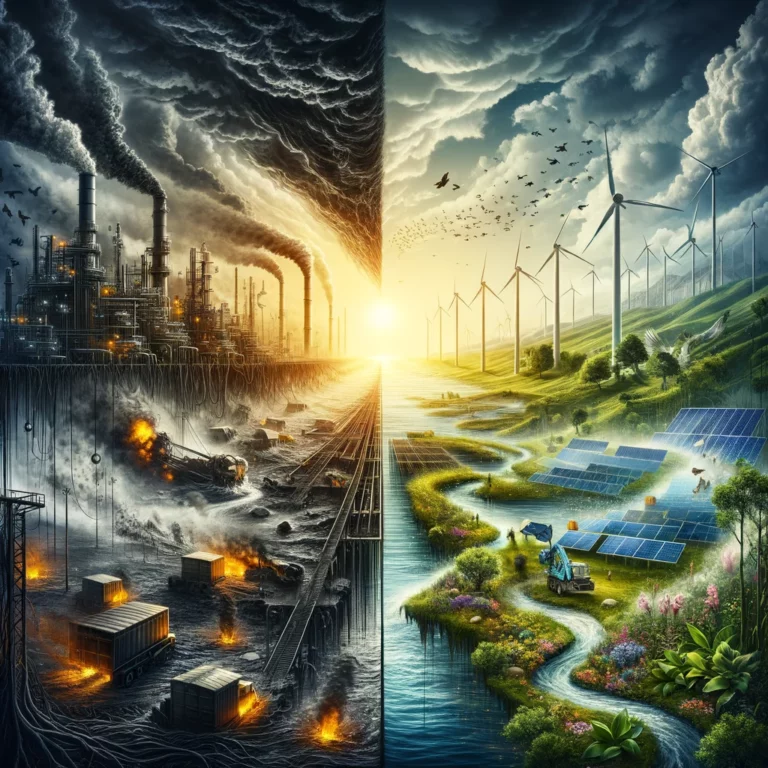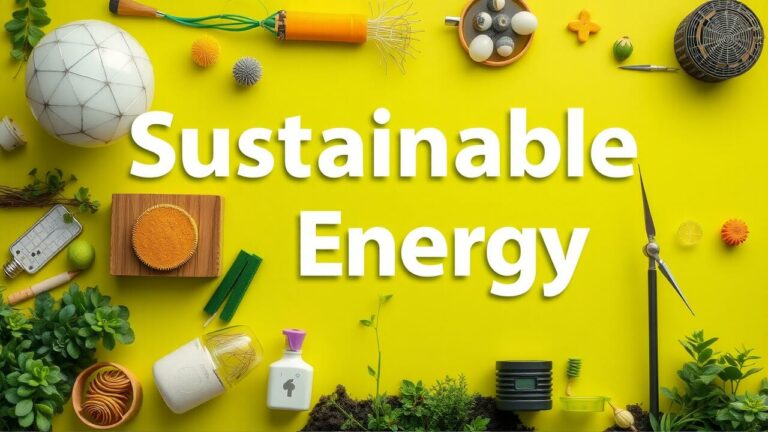The Emergence of Advanced Solar Power Technology
In the realm of sustainable energy, solar power has long been a leading light. Its potential for clean, renewable energy is vast, and recent advancements forecast an even brighter future. The next few years are set to be transformative as advanced solar power technology emerges to alter the way we harness and use this form of energy. One of the notable advancements in this field is the development of perovskite solar cells. These solar cells are not only more efficient but also cheaper than traditional silicon-based cells. Their flexibility and lightweight nature make them a promising contender for broader applications such as integration into building materials or vehicle surfaces. Moreover, there’s also significant progress in concentrator photovoltaics (CPV), a technology that optimizes sunlight conversion into electricity with lenses or curved mirrors focusing sunlight onto small yet highly efficient solar cells. Looking ahead, another game-changing innovation lies in the realm of solar storage solutions. Tackling one of the main drawbacks of solar power – its intermittent availability – these solutions aim at storing surplus energy produced during peak sunny hours for later use when sunlight isn’t available. Battery storage technologies like Tesla’s Powerwall are just scratching the surface, with more advanced and cost-effective options on the horizon, including flow batteries and thermal storage methods. This wave of innovations signals a promising future for solar power technology which will continue to grow in efficiency, affordability and versatility over time.
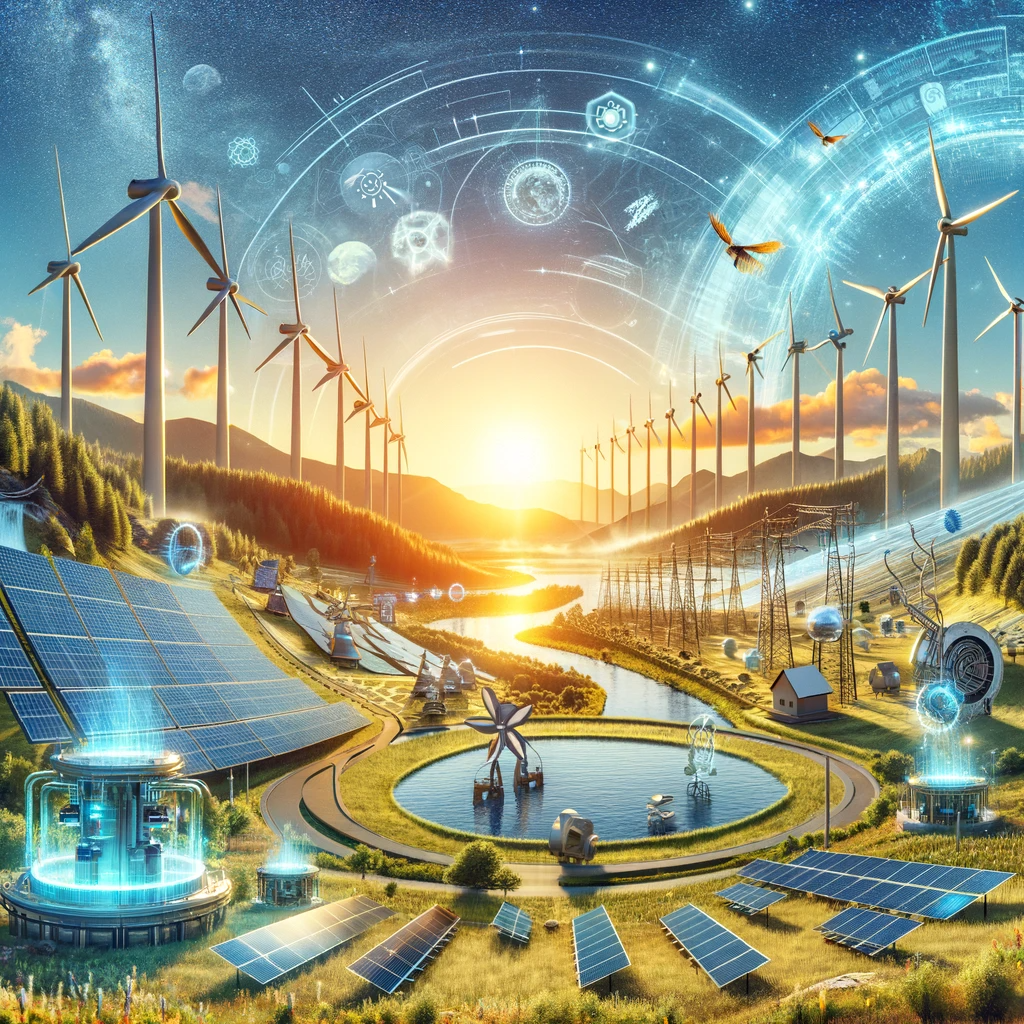
Anticipating the Future: Innovations in Wind Energy
In the realm of renewable energy, wind power has always held a significant place. Its potential is vast and with the advent of new technologies, we can expect some considerable advancements in the way we harness and use this form of energy. Just as solar technology continues to evolve, so does wind power technology, broadening its scope and effectiveness. One such remarkable innovation expected to transform this field is airborne wind energy systems (AWES). Unlike traditional wind turbines that are stationary and limited by height, AWES are designed to access stronger winds at higher altitudes where more consistent and powerful gusts prevail. These systems use flying devices like kites or drones tethered to the ground with a cable, which convert kinetic wind energy into electricity. This could potentially result in more efficient and abundant energy generation. Additionally, there’s also ongoing research into bladeless wind turbines. These futuristic designs promise not only to be more efficient but also less harmful to wildlife – addressing one of the main environmental criticisms faced by conventional turbines. Furthermore, another promising area lies in energy storage solutions for wind power. Just like solar power has its battery storage technologies emerging, similar innovations are anticipated for wind energy too. Advanced methods like compressed air energy storage (CAES) or flywheel energy storage (FES) aim at storing excess generated power during high-wind periods for later use when there’s less or no wind. This addresses one of the key drawbacks related to the inconsistent availability of wind power. These groundbreaking advancements present an optimistic outlook for future renewable energy prospects with a focus on increasing efficiency and sustainability while lowering costs over time.
Harnessing the Ocean’s Power: Marine Energy Innovations
As we continue to explore the potential of renewable energy, marine or ocean energy emerges as an untapped resource with immense possibilities. By harnessing the power of our oceans, seas, and even smaller bodies of water, we can generate clean, sustainable energy that could play a significant role in our future energy mix. Innovations in this sector are increasingly exciting, with promising technologies such as tidal stream generators, wave energy converters, and offshore wind farms leading the way. Tidal stream generators are one such innovation that deserves mention. Functioning similarly to wind turbines but submerged underwater, these devices capture the kinetic energy from moving water caused by tides and convert it into electricity. This method has an advantage over wind and solar power because tides are predictable and constant. Another noteworthy technology is wave energy converters. These systems capture energy directly from surface waves or from pressure fluctuations below the surface. The diversity in designs – ranging from floating buoys to devices embedded on the seafloor – showcases the tremendous innovation in this space. Moreover, while offshore wind farms aren’t new per se, their growing scale and efficiency indeed qualify them as an innovative aspect of marine energy. The use of larger turbines and floating platforms allows these farms to be located farther offshore where winds are stronger and more consistent. This not only increases power generation but also reduces visual pollution compared to near-shore installations. Energy storage solutions for marine power also hold great promise — similar to what is happening with solar and wind power — which would address intermittency issues related to wave and tidal energies. Thus, through continuous technological advancements and increased research focus on marine energy sources, we’re sailing towards a future powered increasingly by the might of our oceans.
The Evolution and Impact of Hydroelectricity
Next Section: Hydroelectric power has long been a primary player in the realm of renewable energy. The basic concept, harnessing the energy of falling or flowing water to generate electricity, is undeniably simple yet incredibly effective. Over time, hydroelectric technology has evolved significantly, and its impact on our global energy landscape has been profound. Major advancements have taken place in the field of hydropower technology over the years. Modern turbine and generator designs have become increasingly efficient and adaptable to a variety of river conditions. Small-scale or ‘micro’ hydro systems are also gaining popularity for their ability to provide local, decentralized power generation with minimal environmental impact. Furthermore, pumped storage facilities – where water is stored in an upper reservoir and released into a lower one to generate electricity when demand is high – represent another significant innovation in this sector. These facilities essentially function as giant batteries, helping to balance supply and demand and providing grid stability. The impact of such advancements cannot be understated. Hydroelectricity currently accounts for about 16% of global electricity production – a testament to its effectiveness as a renewable energy source. Moreover, it’s estimated that only about 22% of worldwide hydro potential has been tapped so far – indicating vast scope for expansion. The rise of innovative technologies like micro-hydro systems and pumped storage further broadens this scope by making it possible to harness hydro power even in areas without large rivers or steep gradients. However, as we push forward with these innovations, it remains essential that we carefully consider potential environmental impacts and prioritize sustainable practices so as not to disrupt aquatic ecosystems unduly.
Transforming Waste into Energy: Bioenergy Progressions
Over the past few years, another sustainable energy source that has been making significant strides is bioenergy. This form of energy involves harnessing organic waste materials and transforming them into electricity, heat, or biofuels. Bioenergy offers a dual benefit; not only does it generate power but it also aids in managing waste, particularly agricultural and industrial byproducts. As our global population continues to grow and create more waste, the potential for bioenergy is vast. Progress in this sector has been driven by various technological innovations. Anaerobic digestion, a process that breaks down organic matter in an oxygen-free environment to produce biogas, has seen widespread application in modern waste management systems. This biogas can then be used for heating or electricity generation. Similarly, advanced biofuel technologies are evolving rapidly. These include processes such as gasification and pyrolysis which convert biomass into liquid fuels for transport. The use of algae as a source of biodiesel is another promising development in this arena. There’s no doubt that these advancements extend the possibilities of sustainable energy generation while simultaneously addressing waste management issues. However, like hydroelectricity, the successful and responsible implementation of bioenergy requires careful consideration of potential environmental impacts. For instance, we must ensure that land used for biomass production doesn’t encroach upon valuable ecosystems or compete with food production spaces. Furthermore, while it’s clear that these advancements hold great promise for the future of renewable energy and waste management alike, they should not be viewed as standalone solutions but crucial components within an integrated strategy towards achieving overall sustainability goals.
Geothermal Energy Developments: Tapping Into Earth’s Heat
Harnessing the heat from beneath the Earth’s surface is another area where we’re witnessing remarkable advancements in sustainable energy. Geothermal energy, which involves tapping into the Earth’s internal heat to generate electricity or provide heating and cooling systems, has been around for a while. However, recent innovations are making this source of power more accessible and efficient than ever before. Traditional geothermal technology requires areas with high tectonic activity to access underground reservoirs of hot water or steam. But newer methods, such as Enhanced Geothermal Systems (EGS), allow us to create these reservoirs artificially, broadening the scope of potential geothermal sites. Moving on to specific applications, one exciting development is the emergence of geothermal heat pumps for residential use. These systems exploit the relatively constant temperature just below ground level to provide year-round heating and cooling in homes. Not only do they offer a renewable alternative to conventional HVAC systems, but they also boast superior efficiency and longevity. Furthermore, large-scale geothermal plants are becoming more prevalent too. These facilities draw from deeper heat sources – often several kilometers down – turning that thermal energy into electricity that can then be distributed across power grids. While these developments represent significant strides towards a more sustainable future powered by clean energy, it’s important not to overlook their challenges and limitations. One such issue is the high upfront cost associated with installing new geothermal infrastructure – something that can deter potential adopters despite long-term benefits. Additionally, though less environmentally intrusive than some other forms of renewable energy production like hydroelectric dams or wind farms, geothermal exploration isn’t without its environmental concerns including water usage and seismic activity risks. It’s crucial therefore that as we further improve and expand upon these technologies, we do so with an eye towards mitigating their potential impacts on our planet’s ecosystems and resources.
The Breakthroughs in Hydrogen Energy Technology
Shifting our focus, we now turn to the advancements in hydrogen energy technology. Hydrogen is a versatile and abundant element that can be used as a clean fuel source. It has the potential to become a significant player in our quest for sustainable energy solutions due to its high energy content and zero-emission combustion properties. Historically, the main challenge with hydrogen as an energy carrier has been storage and production; however, recent technological breakthroughs are moving us closer towards overcoming these hurdles. The first progression worth highlighting involves electrolysis – a process used to split water into hydrogen and oxygen using electricity. Traditionally, this method has been expensive and inefficient, but new approaches are changing the game. For instance, scientists have found ways to enhance electrolysis by using novel catalyst materials like perovskite oxides that make the process more efficient. Moreover, some companies are pioneering ‘green’ electrolysis techniques powered by renewable sources such as wind or solar power, turning what was once a high-carbon process into a truly green one. On another front, there’s also considerable progress being made in terms of hydrogen storage. A major problem with hydrogen has always been its low density – it takes up too much space for practical use. But researchers have recently designed new materials known as metal-organic frameworks (MOFs) that can store hydrogen at high densities without requiring extreme pressures or temperatures. This could eventually lead to safe, compact hydrogen storage solutions suitable for any scale of applications – from powering cars to entire cities. While these advances paint an optimistic picture for the future of hydrogen energy technology, we must remember that many challenges persist. Scaling up these technologies while maintaining their efficiency will require continued research and investment. Additionally, considering potential environmental impacts and safety concerns associated with handling this volatile element is imperative. Thus, while we celebrate progress in this realm of sustainable energy innovations, we must remain vigilant about ensuring their responsible development and use.
Advancements in Battery Storage Solutions for Renewable Resources
Switching gears, let’s delve into the impressive advancements being made in battery storage solutions for renewable resources. The intermittent nature of renewable energy sources such as wind and solar power presents a significant challenge to their widespread adoption. This is where advanced battery storage comes into play, providing a way to store excess energy produced during peak production periods for use during times of low output or high demand. One exciting development in this domain is the rise of solid-state batteries. Unlike conventional lithium-ion batteries that use liquid electrolytes, these batteries employ solid electrolytes which are inherently safer and more stable. Not only do they mitigate the risk of leakage and combustion often associated with liquid electrolytes, but they also significantly increase the energy density – allowing for longer-lasting power storage. As such, many industry experts believe that solid-state technology could be the key to unlocking even greater potential from renewable energy sources. Additionally, there’s been considerable progress in developing flow batteries for large-scale energy storage applications. Unlike traditional batteries that store their energy in an electrode material, flow batteries store it in a liquid electrolyte solution. This design allows them to be easily scaled up or down depending on power requirements without losing efficiency – making them ideal for grid-level storage applications where large amounts of renewable energy need to be stored and dispatched on demand. However promising these innovations may seem, it’s important to remember that each comes with its own set of challenges. For example, while solid-state batteries offer numerous advantages over traditional ones, issues like high manufacturing costs and short lifespan still need to be addressed before they can become mainstream. Similarly, while flow batteries are great for large-scale applications, their lower energy density makes them less suitable for smaller-scale uses such as electric vehicles or home storage systems. Thus, ongoing research and development efforts are crucial to refine these technologies and address their limitations.
The Role of Artificial Intelligence in Energy Efficiency
As we delve into the future of sustainable energy, it is impossible to ignore the growing role of artificial intelligence (AI) in enhancing energy efficiency. At its core, AI is about making machines smarter, enabling them to learn from past experiences and make predictions about the future. This capability can be harnessed in many ways to optimize the production, distribution, and consumption of energy. Firstly, AI can help manage and balance supply and demand on the electricity grid more efficiently. By analyzing data from a myriad of sources including weather patterns, historical usage data, and real-time meter readings, AI can predict periods of high or low demand and adjust power generation accordingly. This not only minimizes waste but also reduces reliance on non-renewable “peaker” plants that are often used during periods of high demand. For renewable resources like wind and solar power that are dependent on weather conditions, this predictive capability becomes even more valuable. Secondly, AI has proven itself invaluable in improving energy efficiency at the consumer level. Smart thermostats that use AI algorithms to learn homeowners’ behavior patterns can adjust heating and cooling systems for optimal comfort while conserving energy. Similarly, intelligent lighting systems can automatically dim or switch off lights when no one is present in a room. These may seem like small changes but collectively they could result in significant reductions in energy consumption. However promising the integration of AI into our energy systems may seem though, it’s important to remember that it comes with challenges too. Issues related to privacy and cybersecurity are among the most pressing concerns as our dependence on smart devices grows. There is also a risk that as we become more reliant on AI for managing our energy needs, we may inadvertently create new forms of inequality for those who do not have access to these technologies or cannot afford them. Therefore continued attention must be given not just to advancing these technologies but ensuring they’re accessible and beneficial for all.
Policies and Regulations Shaping the Future of Green Energy
As we forge ahead into the future of sustainable energy, it is crucial to recognize the influence policies and regulations have in shaping its trajectory. Governments worldwide play a pivotal role in incentivizing or discouraging certain practices through their legislation, which can either facilitate or hinder the transition towards more environmentally friendly power sources. For instance, subsidies on renewable energy production can make it more cost-competitive against traditional fossil fuels, encouraging more investment into green technologies. Conversely, taxes or penalties on carbon emissions can discourage the use of coal and gas-fired power plants. On another note, international agreements also have significant sway over national energy policies. Take for instance, the Paris Agreement – a legally binding international treaty on climate change adopted by 196 Parties at COP 21 in Paris, where they agreed to limit global warming to well below 2 degrees Celsius compared to pre-industrial levels. This has led many nations to reassess their energy strategies and ramp up efforts towards decarbonization. As countries strive to meet these targets, we are likely to see an increasing number of policies that promote renewable energy use and penalize carbon-intensive activities. However, policy-making isn’t just about promoting good practices; it also involves ensuring fair access to sustainable solutions. With advancements in technology often come increased costs that may not be affordable for everyone. Therefore, governments must also consider how to make sustainable technologies accessible across all socioeconomic levels without creating financial burdens. Policies should aim not only at reducing emissions but also at fostering social equity by ensuring that benefits and costs are distributed fairly among society members. Without this balanced approach, we risk deepening existing inequalities and creating new ones as we move towards a greener future.

